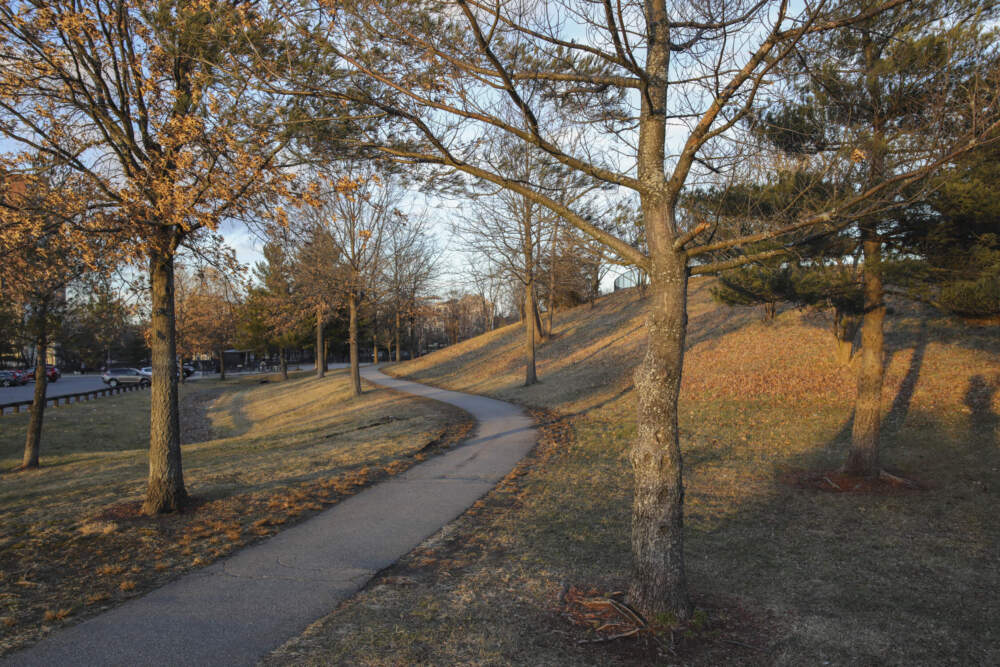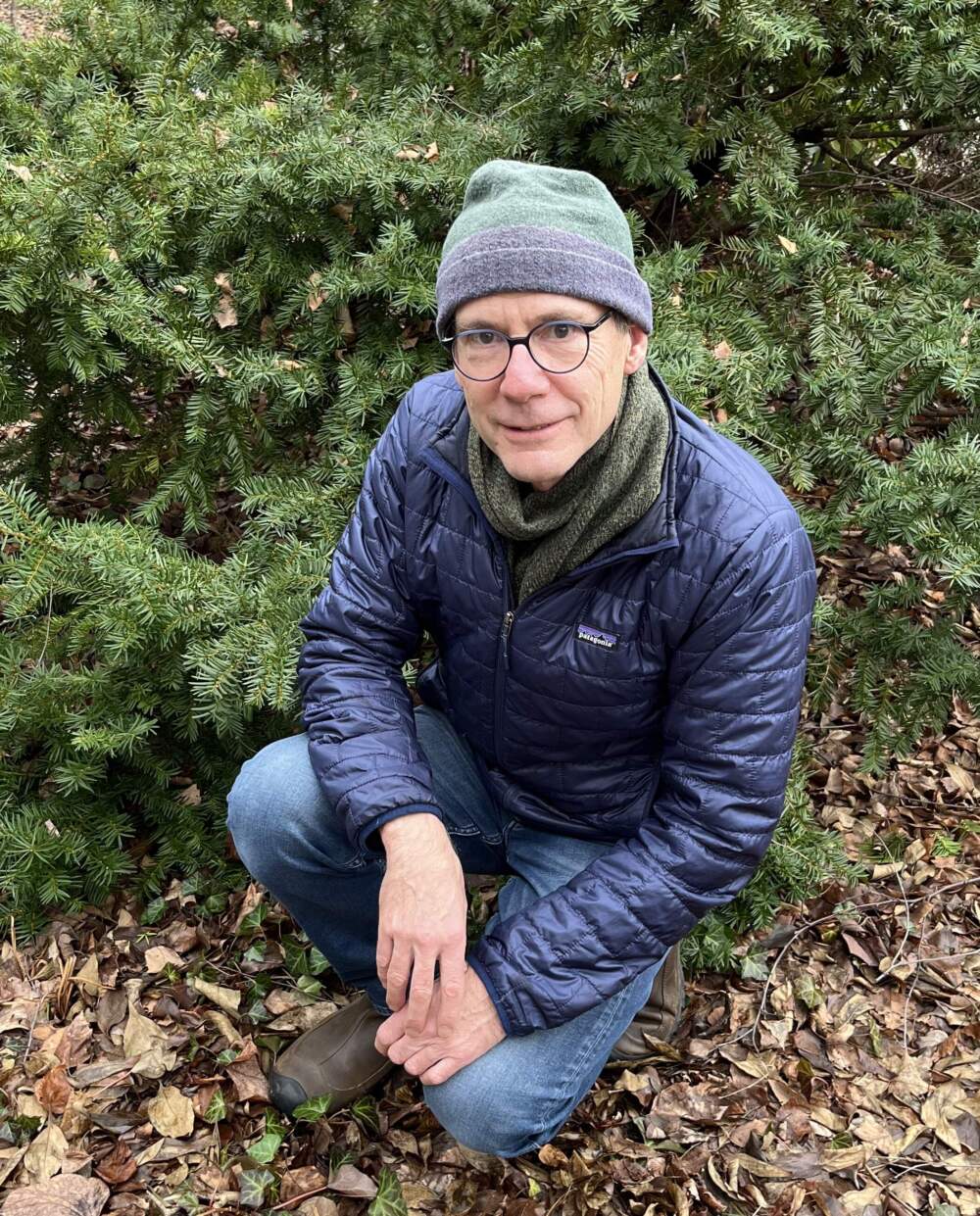Advertisement
Commentary
Finding 'a world of wildness' in Cambridge

While taking out the trash one autumn evening in Cambridge, I heard a coyote. I know those sounds — the yips, the yelps, the howls — from wilderness hikes in California and Arizona and from a recent decade of living in rural Maine.
Until that night I’d heard only rumors of coyote sightings here in the city, stories of them prowling the streets, menacing cats and dogs. But they are real. The city even offers helpful advice on how to coexist with them, warning us, “If approached, don’t run.” Like the cottontail rabbits and wild turkeys that also roam Cambridge neighborhoods, coyotes are reminders of our urban wildness.
I loved living in the wilds of Maine for all those years, but the city called me back. I’m a native Cantabrigian so it should have been an easy homecoming, bringing me closer both to family and to the rich diversity of arts and sciences of the sort I missed in rural Maine. But it has taken me time to adapt to the different kind of wild environment that the city presents.
Gone are the dark night skies exploding with starlight from the Milky Way and beyond. Gone are the dense forests, the windswept blueberry barrens and the astonishing abundance of wildlife. Gone, too, are the familiar vernal pools, streams and hayfields that have long inspired my work as a sound artist.
If wildness is food for the soul, Maine was a feast. You’d think I’d be miserable here, unmoored without the expansive and centering presence of nature, one more victim of nature-deficit disorder. Yet there is still a world of wildness right here.

I started by looking in familiar places. One of my regular walks takes me around Danehy Park in Cambridge, former site of the city’s landfill. It was transformed in the 1980s into a multi-use park, where visitors can stroll along paved paths that wind leisurely around playing fields, grassy knolls, groves of trees and a cattail marsh, where scores of red-winged blackbirds gather in early spring.
There is even a Miyawaki “pocket forest,” a new addition in 2021, which packs a dense assortment of native trees and plants into a stunning patch of wildness covering just a tenth of an acre. Danehy is indeed a city park, but I can find enough small glimpses of natural beauty there to remind me of the vastness of the wild world.
But there is more to see. When I shift my focus and attend to the smaller corners of nature, I find a rich and diverse wilderness in miniature. It’s like putting on a pair of magnifying goggles: My field of view narrows but it fills in with stunning detail. As I walk along the sidewalk, past domesticated dooryard gardens, I try to see beyond the litter and the occasional pile of abandoned dog poop.
Advertisement
And there it is: an exuberant burst of wildness, sprouting up from a sidewalk crack or the base of a parking meter, or climbing a utility pole. Like neighbors and friends, these indomitable plants all have names: Canada goldenrod, nutgrass, lambs quarter, pepperweed. Local horticulturists may decry them as invasive weeds, but to me they are all gifts to reward the inquisitive eye. They signify the wild tenacity of life, its uncanny ability to gain a toehold in the most unlikely places.
Late-summer evenings offer another kind of wild beauty, when the air comes alive with the sound of crickets. While walking the streets of my Cambridge neighborhood, I’ll listen as field crickets chirp rhythmically from hidden spots in garden shrubs, while the steady, thin trill of tree crickets rings from high atop a towering oak or maple. Sometimes I’ll pull out my field recorder to collect their stridulations, playing them back months later to refresh myself during the cold dark depths of winter.
In summer I can often find a spot where cricket song is so loud that it masks all the other sounds of urban life. If I close my eyes I can almost imagine that I’m standing deep in a forest wilderness, far from the city. It’s a blissful moment.
And I look up, too. Even here, where the night sky is drenched with light pollution, there are astronomical joys within reach. The horizon-to-horizon splash of the Milky Way may be invisible to city-dwellers, but some of the brightest stars within our galaxy still shine through the glare: Rigel, Spica and Arcturus are just a few of our visible stellar companions. The planets, too, shine brightly here: Venus, Mars, Jupiter and Saturn can all be spotted hovering high above the city at various times through the year.
I enjoy tracing the ecliptic — the imaginary arc across the sky that marks the paths of the sun, moon and planets as they wander across the backdrop of the distant stars. The visible universe itself is wilderness supreme — a vast untrammeled expanse of nature and a wellspring of awe. It’s ours to discover by simply looking up from a busy city street.
As I seek out these ubiquitous signs of wildness I’m reminded that the city itself is the real visitor here, a transient human presence in a wild sea of nature. Even as the climate breaks down from the ravages of human ignorance and greed, nature is unstoppable, shouting out from every sidewalk crack and constellation.
Immersed in wildness as we are, maybe there is hope for a nature-lover like me to plant roots again in the city. If goldenrod can do it, so can I.
